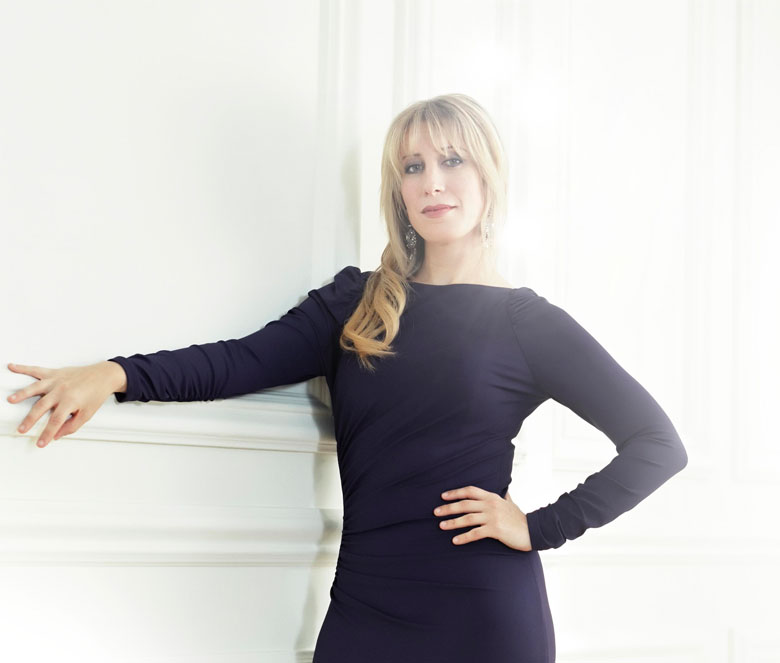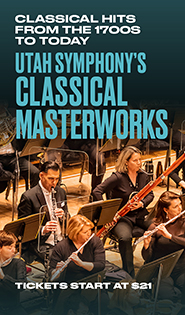Fliter returns to Utah Symphony in fine style with delightful Ravel

Ingrid Fliter made a welcome return to the Utah Symphony Friday night in her first local visit since 2021.
The Argentinian artist was the soloist in Ravel’s Piano Concerto in G, a delightfully carefree work in which the composer draws on several different musical styles, including jazz and Basque folk elements, to create a wonderfully cohesive whole. Ravel once said the he wasn’t intending the concerto to be profound; instead, he wanted it to be entertaining. He succeeded in that, and Fliter fully captured the jazzy lightheartedness of the work.
Joining Fliter onstage is the Uzbekastani conductor Aziz Shokhakimov, who is making an overdue return visit after a stunning local debut in 2019. He and Fliter were solid collaborators, with the conductor allowing the soloist to stand out, and never letting the orchestra overpower her.
Fliter underscored the bright, rhythmically vibrant music of the opening movement with her light touch and nuanced playing. And Shokhakimov emphasized the delightful interplay between the piano and orchestra in this movement.
The lovely Adagio is almost Mozartian in its simplicity and Fliter and Shokhakimov emphasized the subtle expressiveness of the music with both the piano and orchestra playing with fluid lyricism.
This movement also showcased several of the woodwind players in solo moments. Among them were principal flute Mercedes Smith, principal clarinet Tad Calcara, associate principal oboe James Hall and English horn player Lissa Stolz.
Fliter and Shokhakimov captured the spirited, bouncy character of the finale with crisp articulation and precise, well-defined playing that underscored the rapid interplay between piano and orchestra, both in the full ensemble and in snippets of solo interjections.
The audience responded to Fliter’s performance with boisterous applause and she responded with an encore, Chopin’s luminescent Nocturne in D flat Major, op. 27, no. 2— played with a rich, warm tone that allowed the piece’s dreamy lyricism to shine.
After intermission, Shokhakimov and the orchestra gave a tour de force reading of music from Prokofiev’s ballet score Romeo and Juliet. At nearly 40 minutes, the well-chosen selections give an excellent overview of the story behind the full ballet score.
Shokhakimov elicited nuanced playing from the orchestra, and emphasized the balletic underpinning of the music. He brought out the drama, passion and emotional power of the score, with the orchestra responding with a dynamic performance that was expressive, bold and intense.
The concert opened with Winter Bells, a tone poem by the young Russian composer Polina Nazaykinskaya. According to the composer, the piece depicts a traveler trying to make his way through a terrible blizzard. The music is quite descriptive, and Nazaykinskaya captured the struggles the traveler endures during his journey with imaginative orchestral colors.
Shokhakimov’s account skillfully brought out the striking contrasts in the piece, from the melodic opening, featuring a lovely solo by principal oboe Zachary Hammond, to the dissonant chords and strident playing by the brass, to the repose of the ending that recaps the opening motives.
This weekend’s concert is the final “Masterworks Magnified” for the season, a reincarnation of the “enhanced concerts” that the symphony presented in the years following its merger with Utah Opera in 2002.
The evening features Ben Kipp, the Utah Symphony/Utah Opera vice president of education and community engagement, interviewing Nazaykinskaya while the stage crew reconfigured the seating for Ravel’s concerto, and also talking to Hammond prior to the Prokofiev.
There is also a giant split screen on the back wall, and cameras positioned around Abravanel Hall that focus on individual players, the conductor and also on the keyboard and Fliter’s hands.
Whether or not this enhances the concert experience is debatable. One can imagine that it might be enjoyable for someone who has never been to, or is only an infrequent attendee of, a Utah Symphony concert. But to veteran concertgoers it is definitely a distraction. The music can speak for itself without these extraneous additions.
The program will be repeated 7:30 p.m. Saturday. utahsymphony.org

